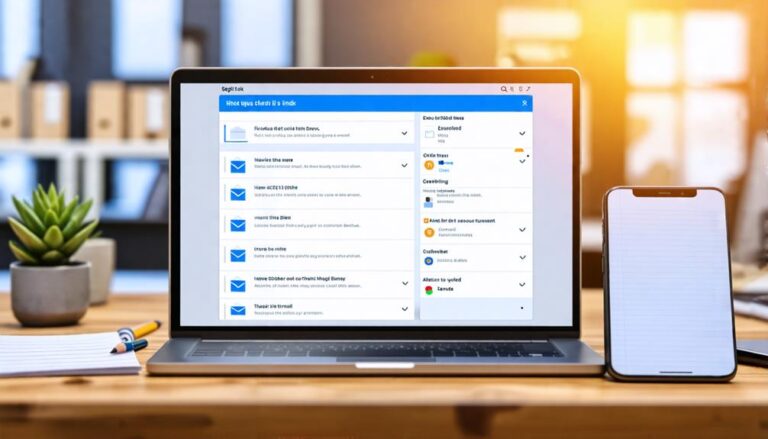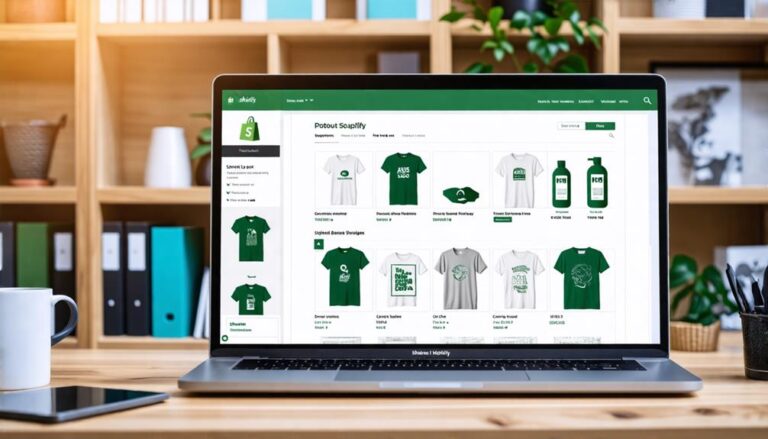Launching your e-commerce venture on Shopify involves several key steps to ensure a successful start.
First, you'll need to create an account on Shopify, which will serve as the backbone of your online store. After signing up, you'll configure your store by adding essential details like your business name, contact information, and currency settings.
Next, you'll select a Shopify plan that aligns with your business needs. Shopify offers various plans, ranging from basic to advanced, each with different features and pricing structures. Consider your budget, the scale of your inventory, and the specific functionalities you require when choosing a plan.
Once your plan is in place, it's time to customize your store's design. Shopify offers a range of themes that you can use to create a visually appealing and user-friendly website. Ensure that your chosen theme is mobile-responsive to provide a seamless experience for customers using smartphones and tablets.
While customizing your design, focus on elements that reflect your brand's unique identity. This includes your logo, color scheme, and typography. A consistent and recognizable brand image can help build trust and loyalty among your customers.
To avoid getting sidetracked by the myriad of options and configurations, concentrate on setting up the core elements of your Shopify store first. This includes adding products, setting up payment gateways, configuring shipping options, and establishing your store policies.
By laying a solid foundation, you can ensure that your Shopify store is well-prepared to attract and retain customers, setting the stage for a successful e-commerce venture.
Setting Up Your Shopify Store
Setting Up Your Shopify Store
To establish a solid foundation for your side hustle, you'll need to set up your Shopify store by creating an account, choosing a plan, and registering your domain.
First, navigate to the Shopify website and sign up for an account by providing basic information, such as your email address and password. Once your account is created, you'll choose a store name and set up your store's basic configuration.
As you set up your Shopify store, consider the importance of store branding and customer engagement.
Customize your store's theme and layout to reflect your brand's image and values. Add a logo, change the color scheme, and upload high-quality product images to make a lasting impression on potential customers.
Additionally, think about how you'll engage with customers through your store. Will you offer promotions, discounts, or loyalty programs?
Choosing the Right Shopify Plan
As you evaluate the ideal Shopify plan for your side hustle, it's crucial to thoroughly examine the features and pricing of each option.
Consider your side hustle's potential growth and whether you might need to upgrade or downgrade your plan in the future.
Plan Features and Pricing
Choosing the right Shopify plan can significantly impact the success of your side hustle. To make an informed decision, it's crucial to consider your specific needs and prioritize features that will help you achieve your goals. This process of feature prioritization will guide you toward the plan that best supports your side hustle's growth.
When evaluating plans, think about the pricing strategies that fit your business model. Here's a summary of Shopify's main plans tailored to side hustles:
| Plan | Features | Pricing |
|---|---|---|
| Basic Shopify | Online store, payment processing, shipping rates | $29/month |
| Shopify | Adds gift cards, report building, and API access | $79/month |
| Advanced Shopify | Adds advanced report building, API access, and 15 staff accounts | $299/month |
| Shopify Plus | Customizable checkout, advanced API access, and dedicated support | custom pricing |
| Shopify Lite | Online store, payment processing, shipping rates (no website) | $9/month |
Carefully review each plan's features and pricing to ensure they align with the needs of your side hustle. Effective feature prioritization and pricing strategies will help you maximize the value and potential of your Shopify plan, setting your side hustle up for success.
Upgrade and Downgrade Options
Once you've chosen a Shopify plan for your side hustle, you're not locked into it – you can upgrade or downgrade at any time to adapt to your changing needs. As your side hustle grows or experiences fluctuations in sales, you'll need to reassess your plan to ensure you're not overpaying or missing out on essential features.
To make informed decisions about upgrading or downgrading, consider the following key factors:
Analyze your side hustle's performance and adjust your plan accordingly.
Evaluate the features and limitations of each plan.
Assess the cost implications of upgrading or downgrading.
Plan for potential changes in payment processing fees.
Consider seeking guidance from Shopify support or a certified expert for personalized upgrade strategies and downgrade considerations.
Customizing Your Store's Design
Customizing your Shopify store's design for your side hustle involves modifying the theme, which includes layouts, templates, and visual elements, to create a unique and cohesive brand image. You'll make key decisions on color schemes, typography choices, and layout variations that align with your brand's identity and resonate with your target audience. A well-designed theme enhances the user experience, incorporating branding elements that foster customer engagement, which is crucial for the success of your side hustle.
When customizing your theme, prioritize mobile responsiveness to ensure a seamless experience for users across all devices. Establish a clear visual hierarchy by organizing content in a logical and intuitive manner. Navigation menus should be easily accessible, facilitating a smooth browsing experience for your customers.
By leveraging Shopify's theme customization options, you can create a tailored look and feel that reflects your side hustle's personality and values. Effective theme customization requires a delicate balance of aesthetics and functionality. By focusing on these key elements, you'll create a visually appealing and user-friendly store that drives customer engagement and boosts sales, key factors for growing your side hustle.
Take control of your store's design and transform it into an enthralling online presence that showcases your side hustle's unique character and offerings.
Adding Products and Collections
Numerous products and collections are the backbone of any successful e-commerce side hustle on Shopify, and adding them effectively is essential for creating a seamless shopping experience that showcases your unique offerings.
You'll want to organize your products into collections that make sense for your side hustle, such as by category, brand, or season.
When adding products, you'll need to include high-quality product images, detailed product descriptions, and accurate pricing information.
Here are some key considerations for adding products and collections for your side hustle:
- Use clear and concise product titles and descriptions to help customers find what they're looking for.
- Organize collections in a way that makes sense for your side hustle, such as by category or brand.
- Use high-quality product images to showcase your products from different angles.
- Make sure to include accurate pricing and inventory information to avoid overselling or underselling.
Payment and Shipping Options
Now that you've set up your products and collections for your side hustle, you'll need to configure payment and shipping options to complete your Shopify store's setup.
You'll start by setting up payment gateways, which allow customers to securely pay for their orders using various payment methods.
To guarantee accurate shipping costs, you'll also need to calculate shipping rates based on factors like package weight, dimensions, and destination.
Setting Up Payment Gateways
Setting Up Payment Gateways for Your Side Hustle
To enable transactions for your side hustle, you'll need to set up payment gateways that integrate seamlessly with your chosen e-commerce platform. Payment gateways are services that process and authorize online payments, ensuring secure and reliable transactions.
When choosing a payment gateway, consider factors such as payment security, transaction fees, and compatibility with your e-commerce platform.
Here are some popular payment gateways you can integrate with your side hustle store:
- PayPal: a widely accepted payment method with robust security features
- Stripe: a scalable payment gateway with flexible pricing plans
- Apple Pay: a convenient payment option for Apple device users
- Google Pay: a fast and secure payment method for Android users
When setting up a payment gateway, make sure to configure the payment settings, test the payment flow, and ensure that the gateway is properly integrated with your side hustle store.
Calculating Shipping Costs
Calculating shipping costs accurately is essential for your side hustle store, as it directly impacts your profitability and customer satisfaction. To get it right, you'll need to evaluate various shipping strategies and cost-effective solutions.
On Shopify, you can set up shipping rates based on weight, dimensions, or a flat rate. You can also integrate third-party shipping carriers like USPS, UPS, or FedEx to get real-time rates.
When calculating shipping costs, assess the packaging, handling, and delivery expenses. You'll also want to factor in any additional costs, such as insurance or tracking fees.
To simplify the process, Shopify offers a built-in shipping calculator that can estimate costs based on the customer's location and the weight of the package. Additionally, you can use Shopify's shipping profiles to set up different shipping rates for different products or collections.
Installing Shopify Apps and Plugins
By leveraging the vast library of Shopify apps and plugins, you can extend the functionality of your e-commerce side hustle and enhance the overall shopping experience for your customers.
With thousands of integrations to choose from, you can easily find solutions to meet specific business needs, improve app performance, and guarantee seamless plugin compatibility.
When selecting apps and plugins for your side hustle, consider the following key factors:
- *Functionality*: Does the app or plugin meet your business requirements?
- *Reviews and ratings*: What do other users say about the app or plugin?
- *Developer support*: Is the developer responsive to user issues and concerns?
- *Integration complexity*: How easily does the app or plugin integrate with your existing setup?
Optimizing Your Store for SEO
One vital step in driving organic traffic to your side hustle's Shopify store is optimizing your site's architecture, product pages, and content to rank higher in search engine results pages (SERPs). Start with keyword research to identify the most relevant terms for your niche and target audience.
| SEO Strategy | Benefits |
|---|---|
| Keyword research | Identify relevant terms for niche products and target audience |
| On-page optimization (meta tags, titles, descriptions) | Improve search engine rankings and increase click-through rates |
| Content strategy (blog posts, product descriptions) | Establish authority and provide value to customers |
Next, focus on on-page optimization by crafting attention-grabbing titles, descriptions, and meta tags. Develop a content strategy that showcases your brand's expertise and provides value to customers. Prioritize mobile optimization, site speed, and user experience to ensure a seamless browsing experience. Analytics tracking and image optimization are also crucial for measuring performance and improving search engine rankings. By implementing these SEO strategies, you'll be well on your way to driving organic traffic to your side hustle's Shopify store.
Launching and Promoting Your Store
Launching and promoting your side hustle effectively requires executing a well-planned marketing strategy that creates buzz, drives traffic, and converts visitors into paying customers. To achieve this, you need to leverage various promotional channels that resonate with your target audience. Here are some key tactics to evaluate:
Social media promotion: Utilize platforms like Facebook, Instagram, and Twitter to showcase your products or services, engage with customers, and build brand awareness for your side hustle.
Influencer marketing: Partner with influencers in your niche to reach a wider audience and generate buzz around your side hustle.
Email campaigns: Craft personalized, targeted campaigns to nurture leads, offer exclusive promotions, and drive conversions for your side hustle.
Content marketing: Create valuable, high-quality content to attract and retain a clearly defined audience, and drive profitable customer action for your side hustle.
Paid advertising: Use targeted ads to amplify your message, build brand awareness, and drive conversions for your side hustle.
Conclusion
You've successfully set up your Shopify store, customized its design, and optimized it for SEO. Now, you're ready to launch and promote your online side hustle.
As you embark on this exciting journey, keep in mind that e-commerce sales are projected to reach $6.5 trillion by 2023, with online shopping accounting for 22% of global retail sales.
With the right strategy and execution, your Shopify store can turn your side hustle into a significant contributor to this burgeoning market.

















































0
View comments